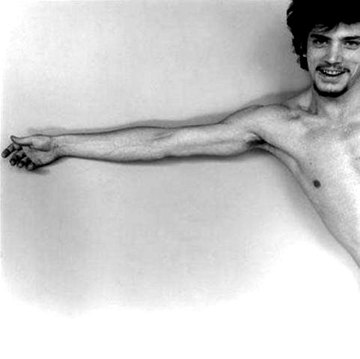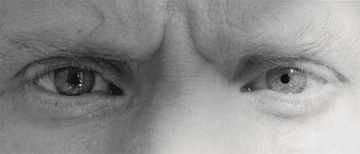
Robert Mapplethorpe, "Self Portrait," 1975
Last week, people from far and wide gathered for a special conference titled “Imperfect Moments: Mapplethorpe and Censorship Twenty Years Later,” which was co-presented by the Institute of Contemporary Art (ICA) and the Philadelphia Exhibitions Initiative at The Pew Center for Arts & Heritage.
This two-day symposium commemorated the 20th anniversary of the infamous 1988 exhibition Robert Mapplethorpe: The Perfect Moment, which sparked a firestorm of controversy when some US congressionals took offense to funds provided by the National Endownment for the Arts (NEA) being used to exhibit Mapplethorpe’s graphic sexual imagery.
The retrospective of more than 150 works, many of them depicting gay subcultures, proved too hot to handle and a number of museums found themselves on the frontline of controversy—the Corcoran Gallery of Art in Washington, DC canceled their presentation of the show and the director of the Cincinnati’s Contemporary Arts Center was tried for obscenity and acquitted—and some politicians used the ICA show as an example of how federal grants were misused by the cultural community.

Robert Mapplethorpe, "Self Portrait," 1988
The late Sen. Jesse Helms (R-NC) spearheaded the fight against the Mapplethorpe show and introduced a floor amendment that banned NEA grants from being used to “promote, disseminate or produce obscene or indecent materials, including but not limited to depictions of sadomasochism, homoeroticism, the exploitation of children, or individuals engaged in sex acts; or material which denigrates the objects or beliefs of the adherents of a particular religion or non-religion.”
Today, Mapplethorpe is best remembered for this lightning rod moment, which catapulted the NEA into a crisis. It would soon become one of the key moments in the formation of what came to be known as the “culture wars” of the 1990s.
Now two decades later, the ICA is revisiting the controversy and has brought together world-renowned artists, critics, and scholars to examine the exhibition’s legacy, as well as the issues that artists and art institutions face today.

Patti Smith performing at the ICA. Photo via www.philebrity.com and by Dan Murphy (dandurphy.com).
Among the speakers and personalities who appeared at the Philadelphia conference were Janet Kardon, The Perfect Moment‘s original curator; Patti Smith, a former Mapplethorpe lover, collaborator, and subject, who performed last Thursday night (pictured above); an artists’ panel on “The Question of Freedom,” featuring Karen Finley, Tim Miller, and Andres Serrano—all related to one or another controversy involving the NEA; and an institutional panel moderated by Robert Storr, Dean of the School of Fine Arts at Yale University, on “The Question of Courage.”
For those of us that weren’t able to attend the conference, Tyler Green of Modern Art Notes broadcast the event using his Twitter account. Among his feed I’ve culled the following quotes and observations…by no means an exhaustive list:
- [Michael] Brenson: Piss Christ title not used in NYT[imes] until 1998 #
- [Andres] Serrano: Jesse Helms put me on the map. Jesse discovered me. #
- Karen Finley makes first ‘stimulus package’ joke. Undergrads laugh. #
- [Robert] Storr: Big institutions should speak up more when small institutions come under (various) attack(s) more often than they do. (Me: Amen.) #
- Brenson, Storr: Felix G[onzales]-T[orres] as making conscious response to Mapplethorpe through interactivity of his work. #
- Raymond Learsy: If the Feds think sooo little of the arts (via minor NEA $ increases), maybe art should tell the feds to get out of art. #
- [Kathy] Halbreich: 1989 culture wars inst[itution]s have become irrelevant: NEA, Corcoran, SECA. (True.) #
- All panelists: Important for institutions and staff to remain engaged and in conversation with people who oppose/disagree with you. #
- Role of journalism, criticism in artistic controversy much discussed. Now, what happens next time because arts journalism is almost gone #
Twenty years down the road, I’m not sure if we, as a culture, are less shocked by some of the images in The Perfect Moment, but Green’s last point is particularly poignant today as we see dozens of newspapers and mainstream media outlets slashing arts critics and journalists from its staff. Who will be the people that speak out against censorship when another issue like this emerges? Who are the professionals who can parse the political posturing from valid issues surrounding the arts? My suspicion is that blogs, such as this one, will have to fill that vacuum. The cultural life of America is far too important to be left to the political tide.




Pingback: Arts Stimulus Funding & the Art Economy Part 2: Talking to the House Arts Caucus Co-Chairs | Art21 Blog
Pingback: SEX & DEATH « STILL LIFE
Pingback: The Conflation of Ethics and Morality | Art21 Blog
Pingback: “I am the Invisible Being” | My Work
Pingback: You’ve Got to Read This: December 7, 2010 « Reid All About It
Pingback: Looking at Los Angeles: Owning Robert Mapplethorpe | Art21 Blog
Pingback: Robert Mapplethorpe | We Were There
Pingback: Robert Mapplethorpe’s Art Amidst Public Backlash | crg@cgp